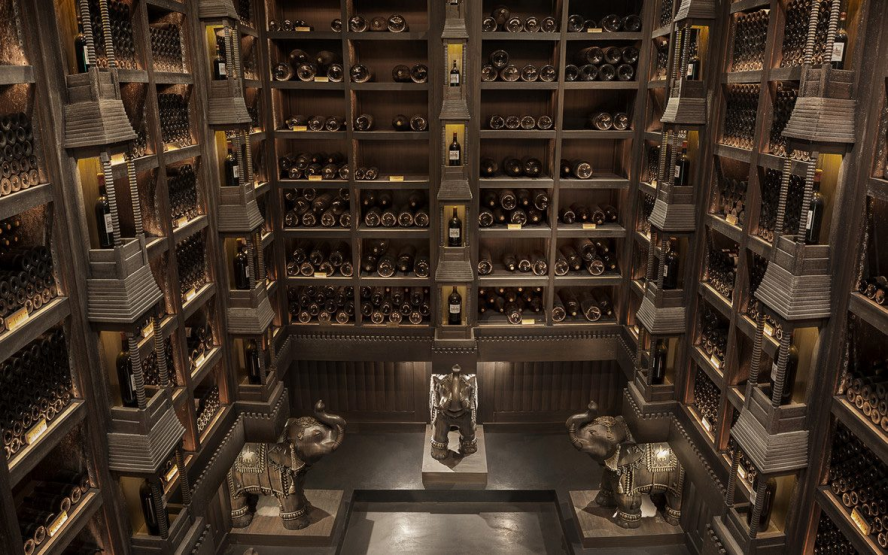Food Wine Red Wine
CHÂTEAU COS-D'ESTOURNEL ST.-ESTÈPHE 2016
CHÂTEAU COS-D'ESTOURNEL ST.-ESTÈPHE 2016
The 2016 Cos d'Estournel is blended of 76% Cabernet Sauvignon, 23% Merlot and 1% Cabernet Franc aged in 65% new and 35% two-year-old French oak for 15 months. Bottled in July 2018, it is deep garnet-purple colored and starts off a little closed and reticent, opening out slowly and seductively to reveal beautiful lilacs, rose hip tea, crushed stones and camphor nuances over a core of crème de cassis, kirsch, wild blueberries and mocha plus wafts of incense and wood smoke.
Forging a new path
A fiercely independent and audacious man, Louis Gaspard d’Estournel would readily forego convention for the sake of progress. This proved especially true of his sales practices; rather than depending on Bordeaux’s traditional network of negociants, he chose to personally dispatch his wines to remote places, signing each bottle as a symbol of his emancipation from the system. In 1838, the newspaper Le Producteur reported, “The arrival of a large shipment of wine sent directly to India by the wealthy owner of a vineyard has caused a stir.”
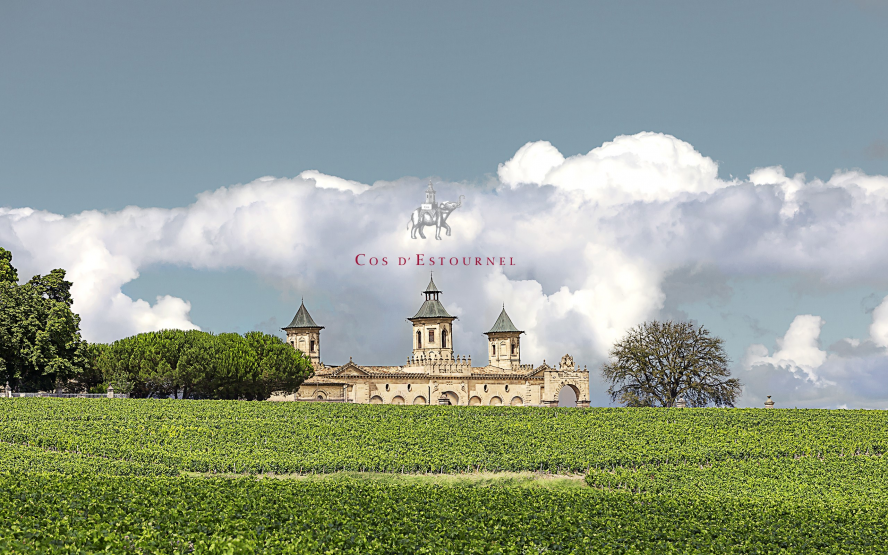
Return from the Indies
The prices of the wines of Cos d’Estournel quickly rose abroad, confirming Louis Gaspard d’Estournel’s intuition about the excellence of his terroir. It also set the scene for a surprising discovery: when the unsold portion of a shipment was returned to the estate, the bottles were opened and tasted. As it happens, travelling the seas had provided favorable conditions for the wines to age. This special selection would be labeled “R” for “Retour des Indes,” or “Returned from India,” and the man responsible for this fortuitous round-trip journey would come to be known as the Maharajah of Saint-Estèphe.
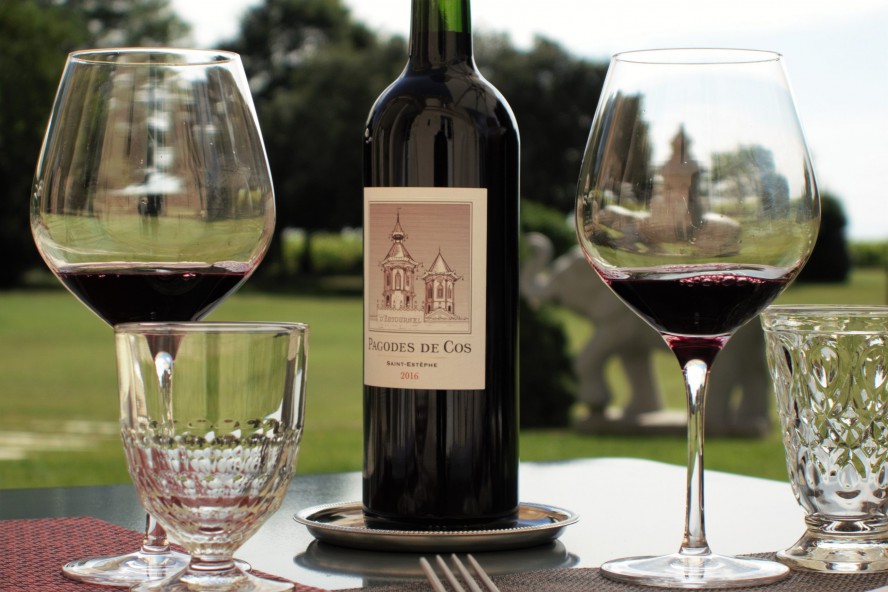
A most prominent location
Cos d’Estournel is ideally situated at the heart of an undulating landscape in the northern Médoc. The estate’s rolling contours served as inspiration for its name; ”cos” is derived from the word for “hill of pebbles” in the old Gascon dialect.
A plateau of deep gravel comprises the core of the site. Gravelly and clayey, the two hills that slope downward from this point benefit respectively from eastern and south-southwestern exposures. These geologic features are completed by a clay vein running diagonally through the vineyard.
The exposure and soil of each plot—and even each row of vine plants—alongside environmental concerns and respect for nature determine selection of grape varieties and growing techniques. A perfect mastery of the geology of the estate’s terroirs and each individual plot allows its teams to select the most appropriate varieties for the different soils. Merlot is found to the east, on clay-limestone soils, while Cabernet Sauvignon is grown on the highest parts of the plateau, where drainage is ideal.
A near miracle in geographic and geologic terms, Cos d’Estournel benefits from an unparalleled combination of soils and exposures. This wealth of natural variations fully expresses itself in the estate’s wines, which are among the world’s most highly reputed.
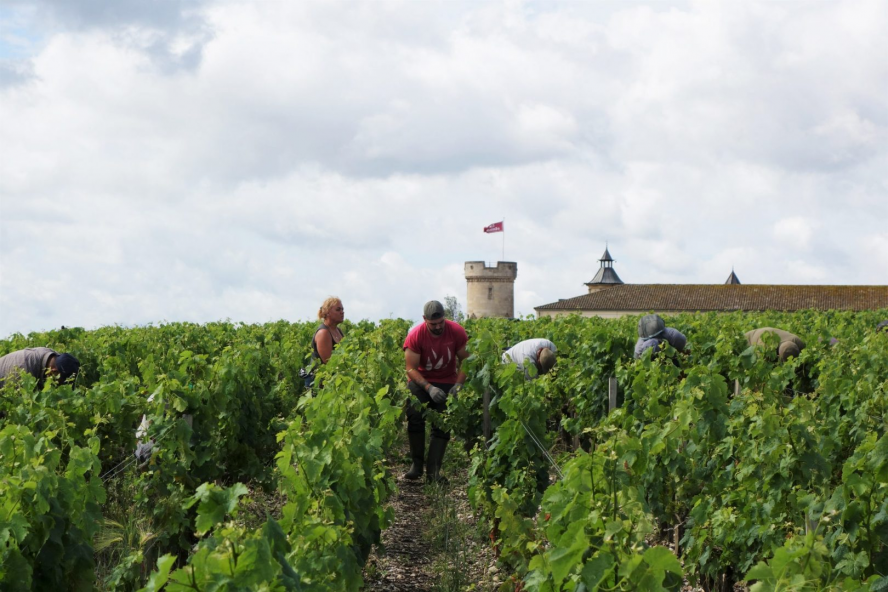
A precious mosaic
Cos d’Estournel lies at the entrance to Saint-Estèphe, a village in the northern reaches of the Médoc region. Blessed with an exceptionally diverse terroir, the Second Growth estate produces wines with a unique, inimitable signature.
The men and women of the estate demonstrate ceaseless vigilance and care in watching over this precious terroir and its environment, planting hedges, selecting the most adapted tools, deploying carefully honed expertise and taking a preventive rather than curative approach. Indeed, nothing is spared in favor of the most natural, ecological winegrowing techniques possible.
In 2001, a study of the vineyard resulted in a precise mapping of soils and revealed the existence of nearly twenty variants on-site. This intimate knowledge of the estate’s terroir is essential, as different types of soil affect vine performance and can bring remarkable complexity to the wines produced.
Plots were meticulously analyzed and subdivided into groups of vine plants according to grape variety, age, exposure and quality. This extremely detailed vision allows the team to adapt varieties and viticulture techniques to fully reveal the potential of the vineyard.
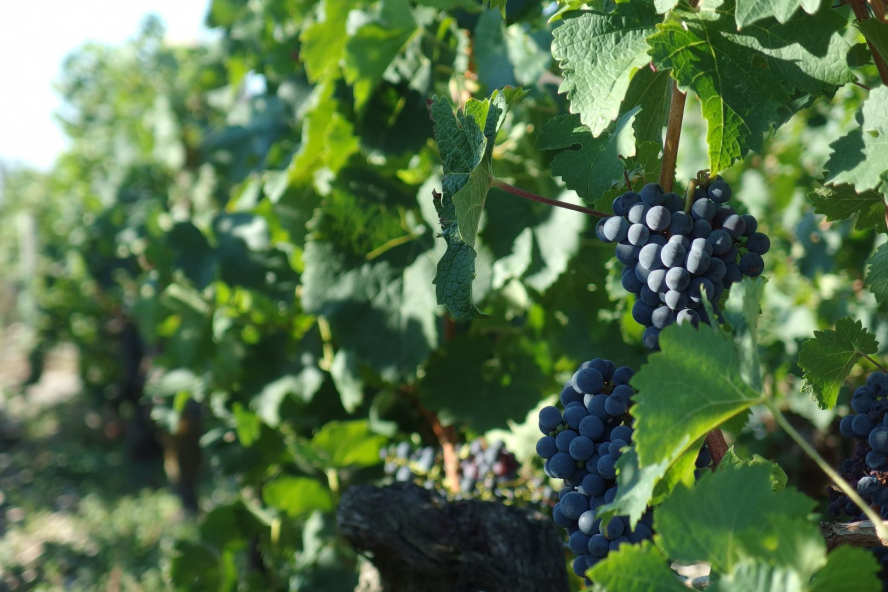
A perfectly adapted climate
The northernmost village appellation of the Médoc, Saint-Estèphe is nestled between the Gironde Estuary and the Atlantic Ocean. More pronounced than elsewhere in the region, the resulting oceanic climate tempers extreme weather conditions; winters are less harsh and summer heat waves less intense. Ripening occurs gently, which favors complexity and freshness of aromas in the grapes.
The wind that often blows through the vineyard is also essential: by drying excess humidity and purifying the air, it allows grape berries to ripen on the vine in perfect health.
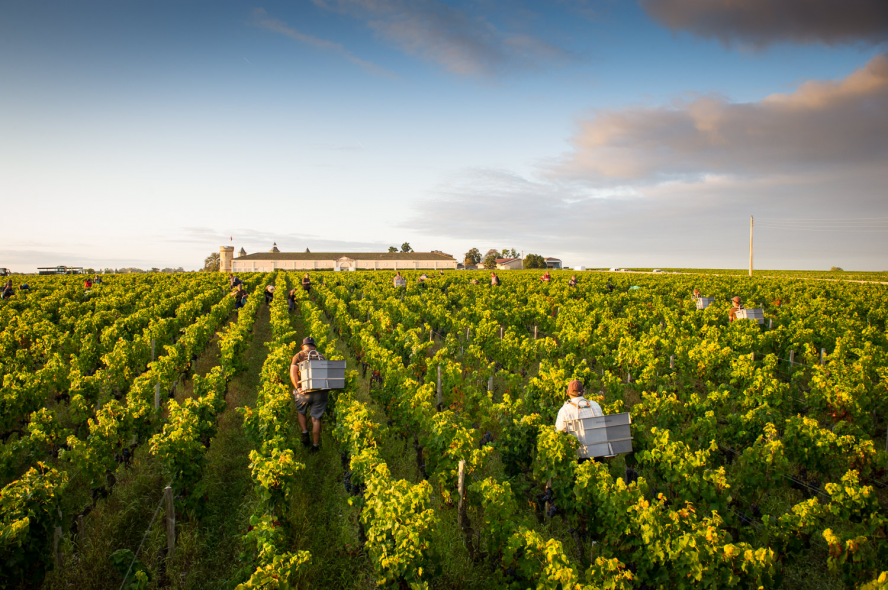
A palace devoted to winemaking
Secluded and mysterious, Cos d’Estournel is situated off the bend of a winding road in the northern Médoc. Beneath its majestic pagodas and behind its heavy sculpted wooden door, the château houses cellars of unsurpassed modernity and purity, a sharp contrast to its ornate façade.
The facilities were designed in collaboration with the team to optimize the processes of winemaking and aging. Architectural form is truly at the service of technique and the château itself remains dedicated to the sole pursuit of winemaking, according to the vision of Louis Gaspard d’Estournel.
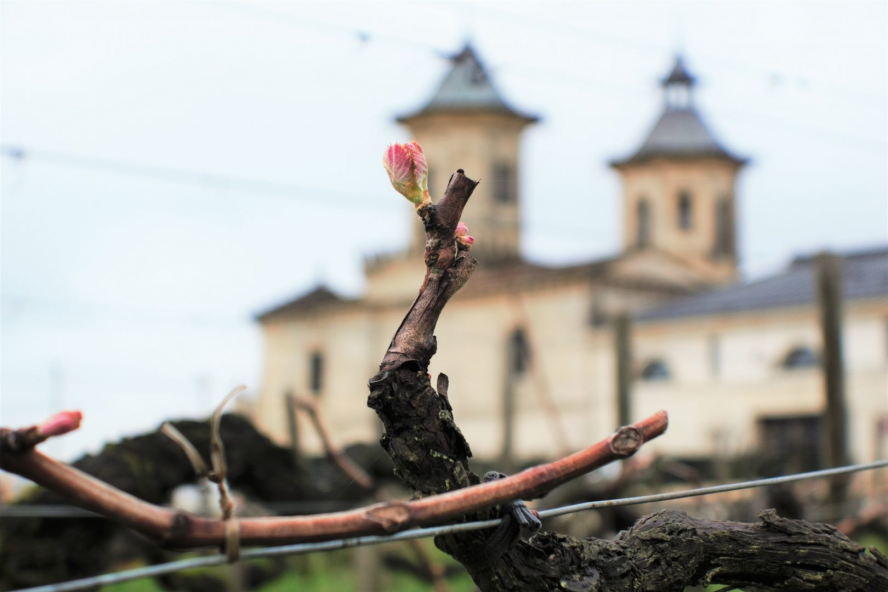
A harmonious blend of inspirations
Inspired by its founder’s passion for India, Cos d’Estournel’s unique architectural style has made it an icon amongst the châteaux of Bordeaux. But the site is also deeply rooted in local tradition, as demonstrated by the use of the creamy-hued limestone typical of the region. This harmonious blending of influences is symbolic of the philosophy of the estate.
The main edifice was entirely renovated in 2008. The beauty of its original architecture was enhanced and state-of-the-art equipment was installed. All was designed and built according to an avant-garde vision and with respect for the environment. Built underground and perfectly insulated, the cellar was conceived to minimize environmental impact and maximize energy efficiency.
Today the château is a softly lit sanctuary where pure lines and contemporary materials like glass and steel play off fine silks and exotic wood.
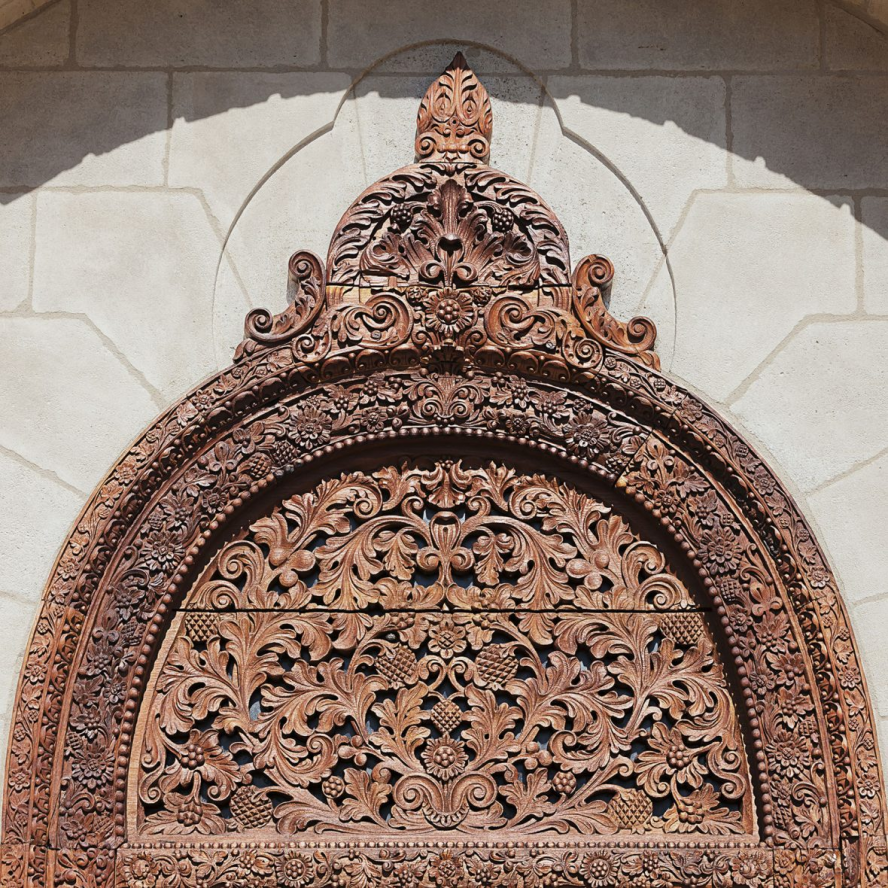
The Chartreuse of Cos d’Estournel
A discreetly luxurious haven tucked behind the main edifice, the Chartreuse is the private residence of Michel Reybier, owner of the estate since 2000.
The Chartreuse embraces all the charms and comforts of a local country house while evoking the romantic Asian influences dear to its founder. Elaborate tapestries, fine silks and precious woods play against the warm colors of locally sourced limestone. Exotic and inviting, voluptuous and authentic, the Chartreuse offers views of an intimate, refined garden and rows of vines as far as the eye can see.
